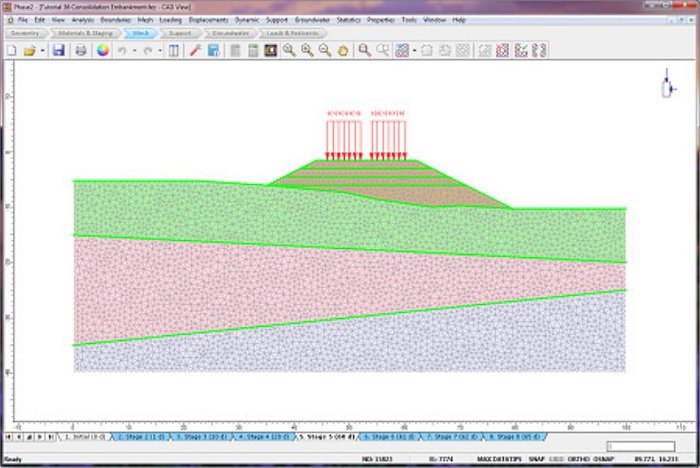

Liner elements can be applied in the modeling of shotcrete, concrete, steel set systems, retaining walls, piles, multi-layer composite liners, geotextiles and more. Phase2 offers a wide range of support modeling options. Progressive failure, support interaction and a variety of other problems can be addressed. It is discussed that since the granulated marble serves as an analogue for a highly interlocked jointed rock mass, its calibrated continuum GBM can be used as an alternative tool for stability analyses and design of excavations and mine pillars in jointed rock masses.It can be used for a wide range of engineering projects and includes support design, finite element slope stability, groundwater seepage and probabilistic analysis.Ĭomplex, multi-stage models can be easily created and quickly analyzed - tunnels in weak or jointed rock, underground powerhouse caverns, open pit mines and slopes, embankments, MSE stabilized earth structures, and much more. The advantage of the continuum over the discontinuum GBM is its shorter computation time. It is demonstrated that the peak strength and failure mode of RS2-GBM are comparable to those of previously calibrated discontinuum GBMs. It is found that RS2-GBM captures some of the most important characteristics of brittle rocks, including the non-linear strength envelope and the change in the failure mode and post-peak response with increasing confinement. An iterative calibration procedure is utilized to match the macro-properties of RS2-GBM to those of marble.

In this paper, a GBM is developed using the continuum numerical program RS2 to reproduce the laboratory behavior of intact and heat-treated (granulated) Wombeyan marble. Using this approach, called the grain-based model (GBM), the progressive micro-cracking leading to macroscopic fracturing and failure of brittle rocks can be realistically simulated.


The discontinuum numerical modeling approaches widely used to simulate brittle rock failure employ the Voronoi tessellation technique to generate polygonal grain-like structures.


 0 kommentar(er)
0 kommentar(er)
